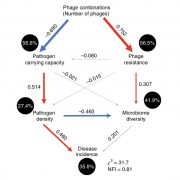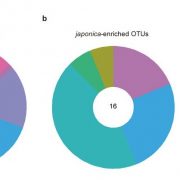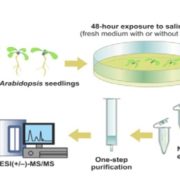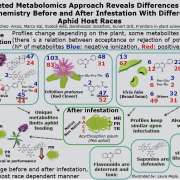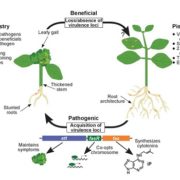Review: A rulebook for peptide control of legume–microbe endosymbiosis (Trends in Plant Sci)
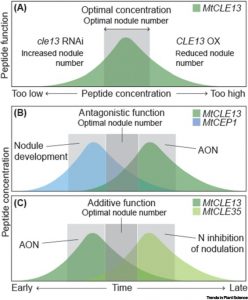 Symbiotic associations with bacterial or fungal partners enhance nutrient uptake for most plants, and recent years have uncovered the very sophisticated means by which these associations are established and controlled. Peptides have emerged as key regulators of many facets of mycorrhizal and rhizobial symbioses. Here, Roy and Müller synthesize much of our current understanding of these processes and identify five key “rules” to describe them. 1) Multiple peptides work in concert to fine-tune processes; 2) Some of these converge on common downstream hubs; 3) Peptide signals intersect with the classic hormones; 4) Symbiotic-associated peptides often are found in large gene families; 5) (not surprisingly) Microbes synthesize peptide mimics to enhance colonization. This is a thoughtful, comprehensive review that provides an important framework for understanding these crucial interactions. (Summary by Mary Williams @PlantTeaching). Trends Plant Sci. 10.1016/j.tplants.2022.02.002
Symbiotic associations with bacterial or fungal partners enhance nutrient uptake for most plants, and recent years have uncovered the very sophisticated means by which these associations are established and controlled. Peptides have emerged as key regulators of many facets of mycorrhizal and rhizobial symbioses. Here, Roy and Müller synthesize much of our current understanding of these processes and identify five key “rules” to describe them. 1) Multiple peptides work in concert to fine-tune processes; 2) Some of these converge on common downstream hubs; 3) Peptide signals intersect with the classic hormones; 4) Symbiotic-associated peptides often are found in large gene families; 5) (not surprisingly) Microbes synthesize peptide mimics to enhance colonization. This is a thoughtful, comprehensive review that provides an important framework for understanding these crucial interactions. (Summary by Mary Williams @PlantTeaching). Trends Plant Sci. 10.1016/j.tplants.2022.02.002


